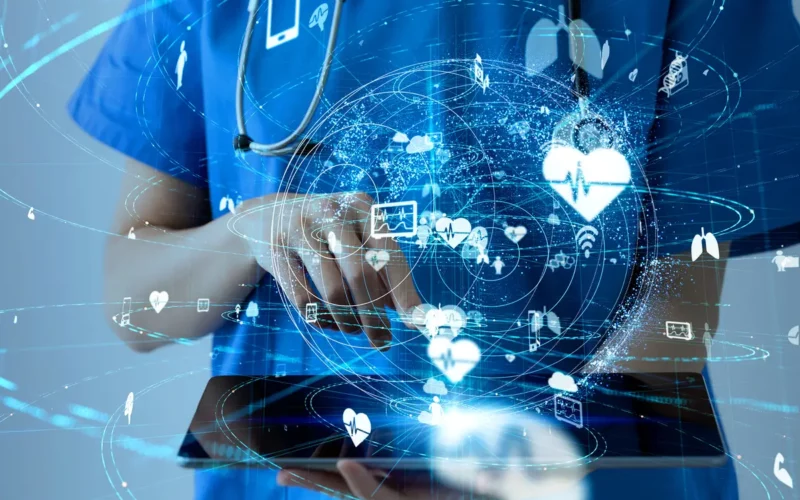With the advent of the groundbreaking technologies and training mechanisms, the field of medicine is totally transformed. From medical schools to instructors and students, everyone is harnessing the power of healthcare technologies to improve their tech skills and medical experience.
Augmented reality, virtual reality, video games, simulations, mobile learning, wearable devices – to name a few, are the revolutionary tech solutions that are greatly contributing to the delivery of healthcare education. These medical technologies have real potential to transform medical education and address the challenging educational environment.
There are many technologies that are currently being used in different medical schools. Medical technologies are undergoing revolutionary changes at a rapid rate; therefore, it is important for medical schools and healthcare professionals to stay up to date with the latest alterations. The main purpose of using technology in medical schools is to facilitate basic clinical knowledge acquisition, improving decision making and clinical skills, practicing and creating treatment plans, boosting confidence and psychomotor skills.
It makes it exciting and daunting at the same time for medical schools to integrate technology into their curriculum. The increasing use of technology in medical schools makes it important for medical school hopefuls to carefully check each school’s classroom technology prior to deciding which medical school to apply.
AR and VR
VR and AR technologies play a key role in healthcare and medical education. There are many medical schools that want their students to get as much clinical experience as possible before they start practicing medicine in a real healthcare setting. Instructors can use AR and VR technologies in medical schools to help medical students perform different medical procedures.
Many apply to a medical school use VR to explore and interact with 3D models to understand real-life scenarios and get immersive training experience. Simulations can offer compelling and memorable lessons while fulfilling a number of educational goals. The basic purpose of using simulation in medical schools is to imitate real patients, clinical tasks and create a real-life clinical environment to facilitate learning under the right conditions.
Some medical schools provide their students with rubber and plastic dummies and allow them to practice performing procedures before they do the procedure on the real patients. Some educators are using anatomy simulation models to help students visualize the anatomy of the human body. Currently, many medical universities are leveraging imaging technology for radiology-based anatomy courses, making it a lot easier for students to understand the basic concepts.
Virtual reality simulation makes it easier for learners to develop clinical skills, especially in the field of laparoscopy by using realistic and accessible computer-generated environments. To put in a nutshell, simulations are useful preparation for clinical training, giving them an opportunity to practice on human-like mannequins, boosting their confidence and enabling them to take treatment decisions in a clinical environment.
Video Classes
Online videos that provide a lot of information into digestible, understandable chunks make learning complex topics a lot easier. There are a number of YouTube channels that help medical students easily memorize complex science material. In addition, video classes can play an effective role in learning important course material and preparing them for OSCE (Object Structured Clinical Examination).
Integrating educational videos and interactive learning resources into the medical school environment will help students to develop basic clinical skills which is the most important goal of medical education. There are some medical schools that are leveraging videos and other technology resources to support their clinical sciences curriculum.
Digital Games
The use of digital games for training medical professionals is all the rage. These digital games serve as a training tool that provides challenging stimulating clinical environments and can be used to train future surgeons. Playing these games improves your eye-hand coordination and reflex times. There are many medical schools that facilitate playing games for their students currently doing clerkships to develop clinical skills and learn how to create a treatment plan in patient care settings.
Wearable Technology
Google glass is an emerging technology that makes education more realistic and effective. Some teaching hospitals are using Google glass to show students doing their rotations using different radiologic images such as MRI and CT scans to provide advanced care and consultations. The University of California, Irvine School of medicine has incorporated Google glass into their curriculum. The unique ability of Google glass to display information in a smartphone-like format can be used to record patient care and student training activities.
In educational settings, the role of wearable technologies can’t be overlooked. It can be used in the classroom setting and clinical training environment to help students understand how to treat patients and monitor their health. By placing wearable technologies on patients allows medical students to take readings and analyze speech patterns, levels of emotion, and perform detailed assessment.
Mobile Technology
There are many medical schools that have started integrating cutting-edge technologies on a regular basis during classes. Medical schools that facilitate mobile learning and allow students to regularly use tablets and iPads in class to access digital resources can effectively transform learning into a more collaborative, personalized, and empowering experience.
Closing Note
Medical science is rapidly advancing, which makes it essential for future doctors to familiarize themselves with the latest technologies to increase their knowledge and develop the skills necessary to become brilliant physicians and deliver excellent care. Many Caribbean medical schools are incorporating technologies into their curriculum and are preparing their students to deal with different challenging and emergency scenarios during their time at medical school.

